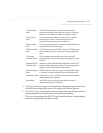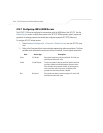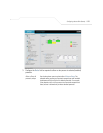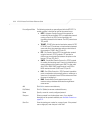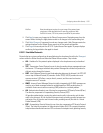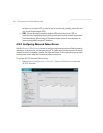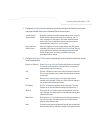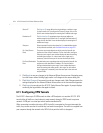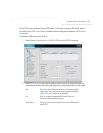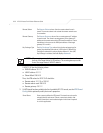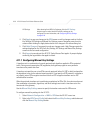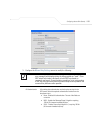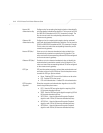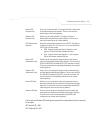
AP-5131 Access Point Product Reference Guide
6-34
4. Click Apply to save any changes to the Advanced Subnet Access screen. Navigating away
from the screen without clicking Apply results in all changes to the screens being lost.
5. Click Undo Changes (if necessary) to undo any changes made. Undo Changes reverts the
settings displayed on the Advanced Subnet Access screen to the last saved configuration.
6. Click Logout to securely exit the AP-5131 Symbol Access Point applet. A prompt displays
confirming the logout before the applet is closed.
6.11 Configuring VPN Tunnels
The AP-5131 allows up to 25 VPN tunnels to either a VPN endpoint or to another AP-5131. VPN
tunnels allow all traffic on a local subnet to route securely through a IPSEC tunnel to a private
network. A VPN port is a virtual port which handles tunneled traffic.
When connecting to another site using a VPN, the traffic is encrypted so if anyone intercepts the
traffic, they cannot see what it is unless they can break the encryption. The traffic is encrypted from
your computer through the network to the VPN. At that point the traffic is decrypted.
Source IP The Source IP range defines the origin address or address range
for the firewall rule. To configure the Source IP range, click on the
field. A new window displays for entering the IP address and range.
Destination IP The Destination IP range determines the target address or
address range for the firewall rule. To configure the Destination IP
range, click on the field. A new window displays for entering the IP
address and range.
Transport Select a protocol from the drop-down list. For a detailed description
of the protocols available, see Available Protocols on page 6-31.
Src. Ports (Source
Ports)
The source port range determines which ports the firewall rule
applies to on the source IP address. Click on the field to configure
the source port range. A new window displays to enter the starting
and ending port ranges. For rules where only a single port is
necessary, enter the same port in the start and end port fields.
Dst. Ports (Destination
Ports
The destination port range determines which ports the firewall rule
applies to on the destination IP address. Click on the field to
configure the destination port range. A new window displays to
enter the starting and ending ports in the range. For rules where
only a single port is necessary, enter the same port in the start and
end port fields.




